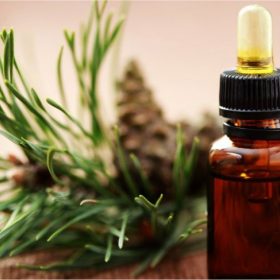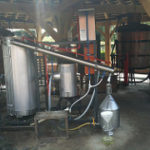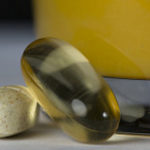Understanding Essential Oils: A Primer On Their Chemical Nature
Uh oh. Chemistry – the word itself can make one’s eyes glaze over. But wait, this is “essential oil chemistry’. MUCH more fun! While even beginning aromatherapy students are put off by the mere mention of the subject, they eventually realize the importance of understanding at least the fundamentals. The basics of essential oil chemistry will help you appreciate what gives a fine oil its unique aroma, help you more carefully discern a good oil from a second-rate one, and can improve your practice of using essential oils therapeutically. The greatest benefits of essential oils lies in their potential for true medicinal applications, where their antiviral, antimicrobial and anti-inflammatory properties are effectively utilized. And it is the understanding of their chemistry that enables the practitioner to select the right oils and use them most appropriately. Convinced? Well here’s a primer to get you started…
So what is it that makes an “essential” oil different than every other oil we’re familiar with? They don’t feel the same, they don’t act the same, and they certainly don’t smell the same. Essential oils and the so-called “fixed” oils (seed or nut oils also known as “carrier oils”) are distinctly different in their molecular structure. While both essential and fixed oils share common basic atomic elements of carbon and hydrogen, that’s really where the similarity ends. Fixed oils are made of triglyceride structures – three long chains of carbon atoms, with hydrogens bonded at various places. The length of the chains and the position and number of hydrogens define the nature of the oil; if hydrogens are bonded to every available location, the oil is “saturated”, for example. One missing hydrogen is “mono-unsaturated”, more than one is “poly-unsaturated”. The long chains and relative consistency of the molecular structures makes fixed oils “oily”, and does not allow them to evaporate quickly.
Essential oils are “volatile” oils – oils that DO easily evaporate. Their chains of carbon atoms to which the hydrogens attach are not as long or heavy, and are much more complex. Many essential oil structures are not really chains, but ring, or multi-ringed shapes with diverse sub-units – called “functional groups” – sticking out in various directions. Like their fixed oil counterparts, essential oils are lipophillic – meaning “fat liking”. The fat-liking nature of both fixed and essential oils makes them easily absorbed by our bodies. Because of their typically smaller structures however, essential oils are absorbed more rapidly than fixed oils, and can easily penetrate deep into the body. Despite their plant origins, this lipophillic nature of essential oils makes their profound healing action on the human body possible.
The therapeutic action of an essential oil is primarily determined by the functional groups found in the molecules that make up that oil (here, many folks might be responding with “Say what?!?”). An essential oil is actually made up of many liquid chemicals; sometimes more than one hundred distinct chemicals are found in one pure essential oil. Each of these chemicals is formed of a carbon-hydrogen structure with a functional group attached – it is the combination of the base structure AND the attached functional group that makes a single, unique molecule. And MANY of these unique molecules combine to form ONE essential oil.
As you can see, essential oils are really very complex in their chemical nature. There are nearly infinite possibilities of functional group and ring or chain combinations. And ONE essential oil alone can be made up of HUNDREDS of these different molecular arrangements. Don’t worry, though! While it sounds complex, one needn’t know all the precise chemical details to use essential oils therapeutically. When selecting between varieties of an essential oil, It IS helpful to know that any particularly oil is often composed of one or more primary molecular forms, with many minor or “trace” constituents, and that ALL these molecules contribute to the oil’s aroma and therapeutic action.
The essential oil with the most perfect balance of natural chemical constituents will have the finest aromas and the most potent therapeutic action. Many factors in an essential oil’s production affect this balance. These include where the plant was grown, soil and climate conditions, time of harvest, distillation equipment, as well as the equipment settings and skill of the distiller. This can give you an idea as to why two varieties of the same oil can smell so different: The wonderful aroma of a fine essential oil will contain an array of notes in a lovely balance, telling you that all natural components are present in the correct amounts.
To best understand this, we’ll examine Lavender essential oil; more than fifty individual molecules have been identified in pure lavender essential oil. The aromatherapist must remember that ALL of these chemicals found in pure and natural lavender oil work together to produce a therapeutic effect. For example, the linalool molecule is antiviral and antibacterial; the linalyl acetate is emotionally calming; other major components including cineol, limonene, pinene and others are all noted for specific biologic and aromatic activity. It is the combined, balanced, synergistic action of these chemicals that make pure, high-quality lavender such a great healer. No one chemical can be singled out and used to give the same profound results as the complete pure essential oil.
What does this mean to the lay-practitioner? That it’s important to find a nice smelling lavender oil! Each individual chemical, both major and minor, has a distinct smell, and is talked about in terms of “notes” within the overall lavender aroma. Some of these are sweet, some citrusy, some are herbaceous, and some camphorous (and the list goes on). A precise amount of each will create a certain Lavender aroma. Some lavenders are more sweet (and may therefore more relaxing), others are more herbaceous. Your nose is an incredible detector of essential oil chemistry, and you’ll be surprised how effective it is at choosing the finest, most therapeutically valuable oil. Your nose can tell you if all the constituents are in balance, if the oil is fresh, and interestingly, also if the oil is right for you – trust yourself in this regard!
All essential oils are subject to similar variations in production methods or the manipulation of their molecular make-ups through the addition of synthetic chemicals. For the most therapeutic benefit, it is always best to use true, carefully-made essential oils. To do this, find a source that is dedicated to supplying only the highest grades of oils. Examine their product’s aromatic quality and business practices and so that you are comfortable with their dedication to your health, not just their bottom line. Listen to your intuition and your own nose; they won’t lie to you! With experience, your ability to discern between subtly different grades of oils will become more astute. With even more education and skill, you’ll start to recognize individual chemicals within an oils aroma, and make the best decisions as to which oils will have the most profound therapeutic affects for you, your family, or in your professional practice.










Leave a reply